
Ever since I began mountain biking over a decade ago, I’ve hated one mountain bike part with a burning passion: the derailleur. Oh, they’ve gotten better–much better–over the years, but not good enough to keep the errant rock or stick from ripping them off on occasion and burning a couple hundred-dollar hole in my wallet. And don’t even get me started on shifting issues–dropped chains, chain suck, improperly tuned parts, mud, water, grit, rust, ice–there are so many ways that a standard derailleur drivetrain system can be derailed, if you will.
When I observed how prevalent gearbox transmissions were becoming at Eurobike this year, I secretly rejoiced. “Maybe all of my drivetrain woes will be resolved once and for all!” I hoped. But in order to decide if the gearbox was the magic potion that would cure all of my ails, I first had to hop on one and give it a go.
Specs

The most common gearbox company on the market today is Pinion, and the Pinion drivetrain is specced on bikes from over 60 brands in Europe. Based out of Germany, Pinion offers several different models of their gearbox, including the just-released C1.12. The new C-Line also has C1.9 and C1.6 models. The C1.12 model offers 12 speeds with a 600% range–compare that to SRAM’s new Eagle 1×12 drivetrain with 12 speeds and a 500% range.
Not only is the range of the C1.12 larger, but the transition between gears feels a bit more natural than Eagle, because the steps between each gear are exactly the same–17.7%. On Eagle, some of the gearing jumps are massive and some are very small, but in the gearbox, each one is identical and easy to predict.
One of the major benefits of the gearbox design over any derailleur drivetrain system is the ability to shift as many gears as you’d like, quickly and instantaneously with the twist of the grip shift. Not only that, gearbox advocates are quick to point out that you can shift while coasting–you don’t need to be pedaling. What they are slower to mention is that you have to be coasting–more on that below.
Of course, the Pinion gearbox is heavier–compared to Eagle XX1 1×12, one of the lightest drivetrains on the market, the C1.12 is about a pound and a half heavier, at 2,100g.

Previous models of the Pinion offered up to 18 speeds, so this new gearbox is actually a reduction in the number of gear options. However, as noted above, it still offers more range than most people will ever need, so the reduction in the number of speeds is no big deal. The benefits of the new C-Line over the previous P-Line include a smaller size–the gearbox is more compact than ever–and lighter weight. The new box exterior is made of a lightweight magnesium alloy that is 33% lighter than aluminum.
Note that while all the folks at the Gates/Pinion booth talked about was the new C1.12, I was sent out on an older P1.12 for testing. Presumably, the C1.12–released at Eurobike–is so new that frames have not yet been constructed to utilize it.
One of my main concerns with the Pinion system was drag–when you see all the gears that are moving internally, it seems like the system would offer immense resistance. However, the CEO for Pinion pointed out that while the gears are spinning, only two are engaged at any one time, making it a pretty efficient system. Compare this to the Rohloff internally geared rear hub, where multiple gears are constantly in contact to produce the gear ratio that you require at any given time.


One other major advantage that the Pinion system offers over the Rohloff is where the weight is located: at the bottom bracket. The bottom bracket is the center of gravity on a bicycle, and the more weight a design can position there, the better. The problem with the Rohloff is that it throws the entire balance of the bicycle off by positioning extra weight in the rear hub, resulting in poor handling.
When it comes to durability, the gearbox comes with a 5-year guarantee, and the only required maintenance is to change the oil in the transmission once a year.
That’s it.
Compared to a regular drivetrain, on which I routinely schralp parts and am constantly working to keep in order, the Pinion is an incredibly worry-free system! But of course, you still have some exterior drive components–and exactly how much maintenance those require depends on the system you’re using.

The Pinion is compatible with a standard chain to drive the rear wheel, but thanks to the internal transmission, it’s also compatible with a Gates Carbon Drive belt system. I’ve tested a Gates before in a singlespeed model, and found it to be quiet, efficient, and worry-free. If you add the belt to the Pinion, you’ve essentially created a 100% maintenance-free drivetrain–you don’t even need to lube your chain!


In fact, that’s the setup that I tested at Interbike this year. The Pinion P1.12 was paired with a Gates Carbon Drive on a Viral Skeptic Titanium hardtail 26+ frame.

If you want to buy this specific bike, the Skeptic sells with the frame and the entire drivetrain (gearbox and belt drive) for $5,000. Then you just need to add cockpit components, fork, and wheels and tires. While it’s not cheap, you are getting a boutique titanium frame mated to expensive, proprietary drivetrain parts. The Gates Carbon Drive without a transmission is expensive by itself, and adding the Pinion only jacks the price higher.
So in theory, the Pinion should offer better gear range than the best drivetrain on the market and a no-hassle, maintenance-free user experience. But how did it perform out on the trail?
Real-Life Test Ride

After dialing in the tire pressure, fit, and suspension settings on the Viral Skeptic, I was off to the singletrack. The first thing I learned at the booth before I hit the trail was that the drivetrain will not downshift under load–meaning that if you’re cranking hard, you need to stop pedaling in order to shift. If you’re spinning easy, you might be able to get away with a shift, and upshifting is slightly easier under moderate load, but ultimately if you want to shift–you need to stop pedaling.
In theory this sounds simple enough, but I found it to be much more difficult in practice. See, here’s the problem: the last place you want to stop pedaling is when you’re cranking up a steep hill. On a normal drivetrain system, you always hear that you’re not supposed to shift under heavy load. Yet, with practice, you can still shift while climbing–you just need to briefly relieve some, but not all, of the tension on the drivetrain to get it to shift. With the Pinion gearbox, on the other hand, all of the tension must be relieved, meaning you must stop pedaling. I found myself totally stalling out and losing almost all momentum while attempting to shift while climbing. This the last thing I want to happen!
Pinion advocates are quick to note that if you see a hill coming or you are surprised by one, that you can quickly dump a bunch of gears at the bottom of the hill to get into an easier gear to climb in. The thing is, if you drop it into a gear easy enough to spin all the way up the hill while you’re at the very bottom, again, you are killing almost all of your momentum.

The key to riding a mountain bike well is conserving every bit of momentum that you possess. This means braking as little as possible, coasting as fast as possible, and carrying all possible speed and power into each climb. To do this, you need to keep cranking fast through the bottom of the valley, and then downshift as needed as you climb, all the while adding power to the system via the pedals. In my test, I found this impossible to do on the Pinion drivetrain.
I think the factors above contributed to an overall feeling I had aboard the Viral Skeptic: it felt slow.
Slow is not a feeling you want for any mountain bike. Heck, my 5″ fat bike can feel fast often enough! I found the Skeptic, on the other hand, to exuded slowness and sluggishness. Unfortunately, my test ride wasn’t long enough to determine exactly what created this sluggishness–the shifting issues noted above, the weight of the drivetrain, possibly the tire pressure, or even the geometry of the Skeptic itself.
“But what about shifting multiple gears while coasting?” You might ask. “Isn’t that a big benefit?”
In my opinion, if you’re coasting on a mountain bike, you’re either lazy, or going so fast that you’ve already run out of gears in your drivetrain. If you read any books or watch videos here on Singletracks about mountain biking fast, such as Ned Overend’s Mountain Bike Like a Champion: Master All the Skills to Tackle the Toughest Terrain, one of the key skills to mountain biking fast and skillfully is to always stay on the pedals, and to stay off the brakes as much as possible. Sure, there are plenty of times when you’re screaming down a fast, technical hill when you don’t need any more speed and you are braking hard, but the number of times when you go from that situation to quickly jamming up a super steep hill and you need to dump a lot of gears, all at once, are very few and far between.
However, if you do find yourself in this situation often where you’re surprised by steep hills and don’t have adequate time to downshift on a derailleur system, you have another bigger problem: you’re not looking far enough down the trail to see the obstacles coming. Again, this is another basic mountain bike skill that you should be employing no matter your drivetrain. Consequently, touting the ability to downshift multiple gears quickly when surprised by a steep climb seems more like a crutch for an unskilled mountain biker rather than an advantage for someone who’s been riding for a long period of time.
I Wanted to Love It

Don’t get me wrong: I wanted to love the Pinion Gearbox. It solves so many issues that I have with standard drivetrains: parts wearing out, parts getting destroyed, the constant maintenance required… and for those reasons alone, I might still like to own one.
However, the last thing I want from a component upgrade–and a costly one at that–is for that component to make me slower. I’ve written before about why I’m over racing, but in my experience, even casual mountain bikers don’t like it when their machine slows them down. You don’t need to be a racer to enjoy going fast on your mountain bike. As such, I see this being a major barrier to widespread gearbox adoption.
However, there’s a pretty major caveat to this entire article: this was just a short test ride at Interbike. It’s possible that with more practice and more experience, the time required to stop pedaling, shift gears, and resume pedaling could be shortened.
Beginning mountain bikers have no end of trouble learning to shift a derailleur drivetrain system–even with 1x drivetrains becoming common place, it isn’t an intuitive system. The same could be said for gearbox transmissions–there is a steep learning curve, and time could be required to learn the nuances of the system.
That said, I see even that steep learning curve to be a barrier to gearbox adoption in the mountain bike market at large. If other riders hop on a gearbox system and have the same experience I had–that they just feel slow–who’s going to want to drop the substantial amount of money to purchase a gearbox bike in the hopes that they’ll get used to the system over time? Nobody.
Caveat number two is that it’s possible some of the shifting harshness and slugishness of the bikes overall has been resolved by the latest C1.12 drivetrain. I really wish I had been able to test the latest rendition in the Pinion line, but alas, that was not to be.
Conclusions… Or the Lack Thereof
After my test, I came away with the feeling that I needed to spend more time on the system to truly form an authoritative opinion. I also can’t help but wonder how much improvement the latest and greatest addition to the Pinion line would offer the issues noted above. While I was grateful to get on a gearbox system for the first time at Interbike this year, more testing is definitely required, and when I do that testing, I won’t bother riding on the older gearbox models.




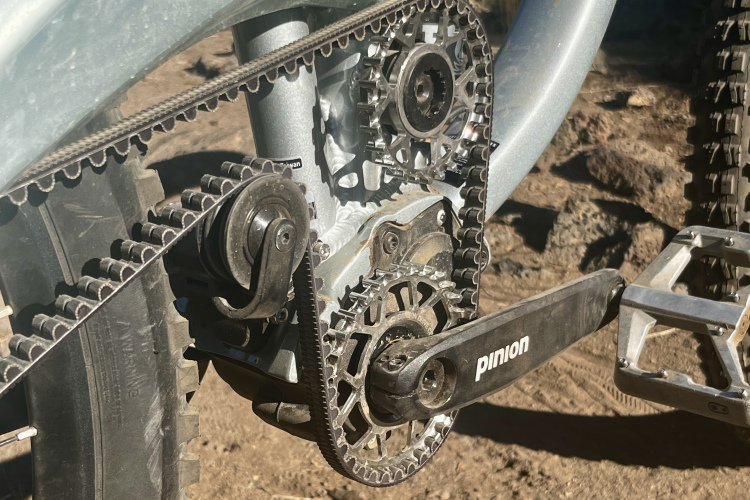
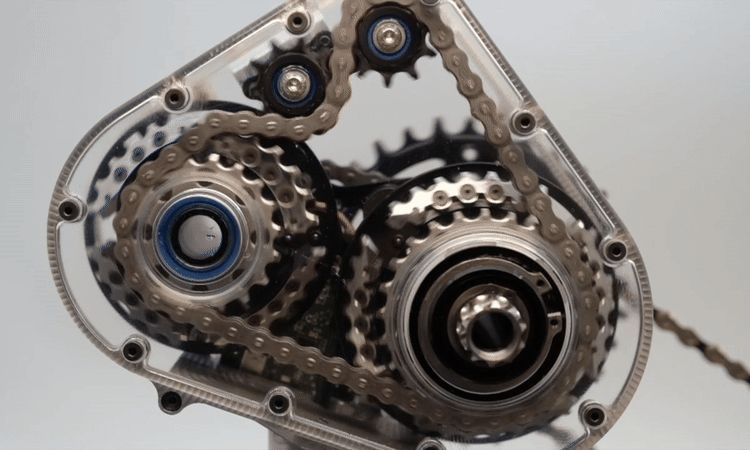
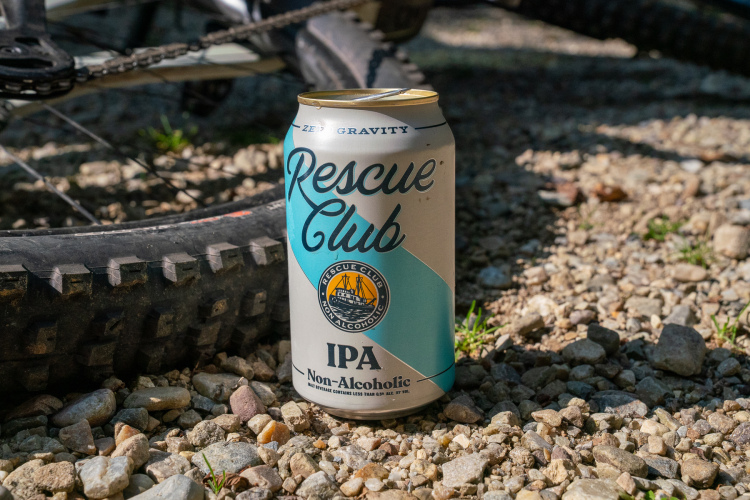
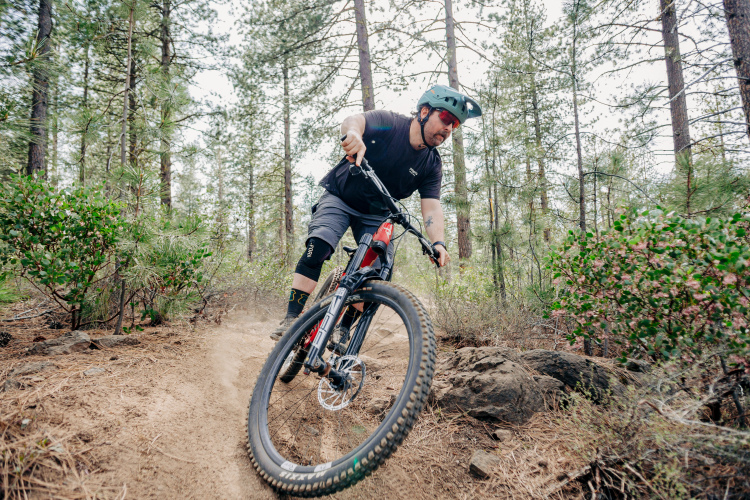
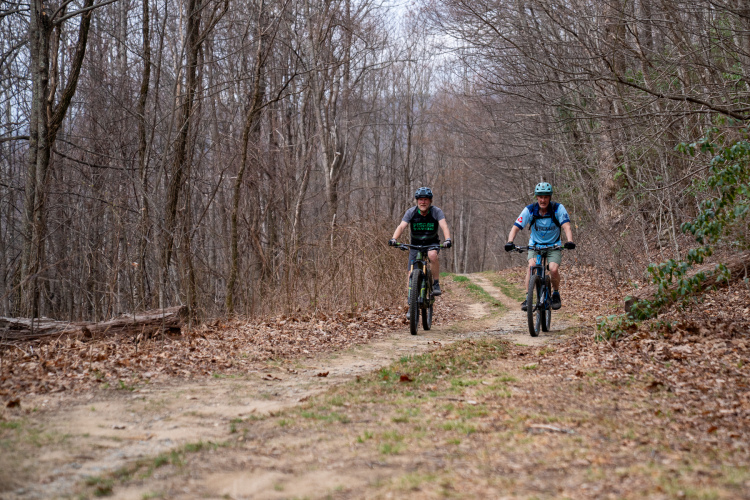
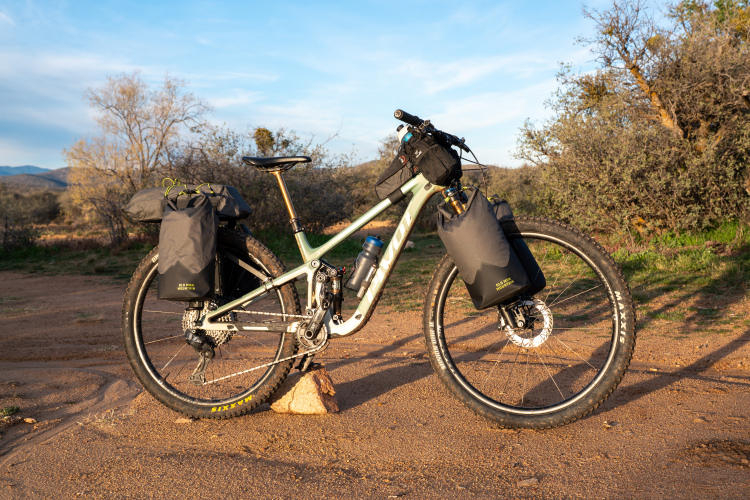

13 Comments
Oct 5, 2016
Having said all of this, what you found on your test ride is not unique to the way I felt or anybody else who rides the system for the first time, especially coming from a standard drivetrain. However, the learning curve for me and the Pinion was about 2 1/2 rides. By halfway through my third ride on the bike, I could pause at the perfect spot in my pedal stroke, shift, and resume pedaling in a fraction of a second and lose virtually NO momentum. In addition, as I continue to ride this box, I realize more often than not, the system allows me to be in the RIGHT gear all of the time. While my friends are struggling in the wrong gear to get up a steep and sudden pitch, I can pause for a brief second, downshift two to three gears, and be exactly where I want to be and motor up the climb without issue, often faster and more efficiently than the derailleured folks around me struggling in the wrong gear and unable to shift (yes, a derailleur WILL shift under load but sometimes out of the saddle hammering is a bad place to do that without a possible chain breaking, so people keep it in the gear they're in and muscle up the climb instead). I now have completely changed the way I shift, and it's because of the benefit of being able to shift multiple gears without a pedal stroke that make that possible: in a bomber rock section with a tight switchback coming up, I can dump three gears while plowing through the rocks and be in the right one upon exiting the switchback, without taking a rock striking pedal stroke (just one of the many examples I can think of that happen frequently where I ride). In any case, I FULLY BELIEVE that the benefits of this system far outweigh the negatives or I wouldn't have put my company's future on the line for it. But I've done this before, when people said that 29" wheels weren't going to go anywhere, and Niner found it's place. I'm hoping to do it again with the gearbox bike. Do I think every bike should be replaced with a gearbox? Not in it's current state. I don't see Nino Schurter racing it anytime soon, but the Nino's of the world are a very small percentage of the riding community. Those of us who just want to go out and have an amazing time in the backcountry on epic single track can value greatly from the gearbox advantages. That's my take, anyway, for what it's worth. ;)
Oct 6, 2016
Also, it's interesting to consider that in my review above, I was comparing the gearbox to a drivetrain that's in good working order. Whereas, I find that rarely are my drivetrains working properly--I was reminded of this last night :) While I wasn't having any major issues, my chain needed some lube, I probably need to fiddle with the barrel adjusters to get the derailleur realigned, and the chainslap was crazy--all issues that are nonexistent on a gearbox.
Regarding the Q Factor of the C1.12, is it not possible to just a crankset that widens the Q Factor enough for the cranks to clear the chainstays, or does the gearbox require a very specific crankset?
Oct 6, 2016
May 15, 2017
Have you ever tried the Shimano Alfine 8 or 11 hub? Ok, I've never seen those on a mountain bike, but I belive this could be a good match for you. Ok again, those are not as fancy as a Pinion or Rohloff gearbox, but they have some nice features:
- they have a clutch, so the shifting is done exactly like with a derailleur: Keep pedaling with a little less weight on the pedals
- compatible wirh belt drive
- affordable
- silent
Note that the Alfine 8 is greased for a life of 50'000 km (in my opinion), while the Alfine 11 has the Rohloff-type oil change system.
Oct 4, 2016
Have you completely forgotten what it's like to ride in Georgia?!?! Cause, that pretty much sums up a lot of our trails. ;)
Oct 4, 2016
Jun 24, 2023
I would imagine that for every 1 mountain biker who is obsessed with going as fast as possible all the time, there are at least 20 mountain bikers for whom the benefits of a system like the Pinion gearbox would be more important.
Jun 26, 2023
Jun 26, 2023
Oct 6, 2016
Oct 5, 2016
Oct 6, 2016
Oct 6, 2016